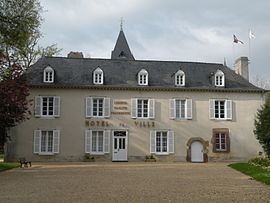Area 32.14 km² | Canton Cesson-Sévigné Population (2008) 15,239 Local time Wednesday 2:33 PM | |
 | ||
Weather 14°C, Wind SW at 21 km/h, 84% Humidity | ||
Cesson-Sévigné is a commune in the Ille-et-Vilaine department in Brittany in northwestern France.
Contents
Map of 35510 Cesson-S%C3%A9vign%C3%A9, France
It is a suburb directly to the east of Rennes, bordered on its west side by the University of Rennes and the Technopole Atalante. It is primarily a residential area for the middle class. The south side is a mix of commercial and industrial areas, the largest to the east of Rennes. One of the French famous grande école Telecom Bretagne also known as ENST Bretagne has one of its campus here. This campus is renowned and reputed for its work in networking domain.
Population
A small rural town in the early 1960s, the town grew quickly during the following decades. In 1999, it was the fifth commune in the department after Rennes, Saint-Malo, Fougères, and Vitré.
Inhabitants of Cesson-Sévigné are called Cessonnais in French.
Culture
The town has a large collection of sculpture by the French Romantic-Realist artist Jean Boucher, who was born there. A sculpture park extends from the Hotel de Ville, and a large statue commemorating Camille Desmoulins occupies a nearby junction. Other sculptures are present in the Centre Culturel, which also hosts a rolling program of exhibitions and other events.
The town is also graced by a wide variety of parks and gardens, especially the formal garden of the Manoir de Bourchevreuil, which is also open to the public. A large public space exists in the newtown area known as La Monniais.
The town won the Grand National Award in the Floral Towns competition in 2005 and the gold medal at the European "Entente Florale" in 1999.
Sights
International relations
The commune is twinned with:
